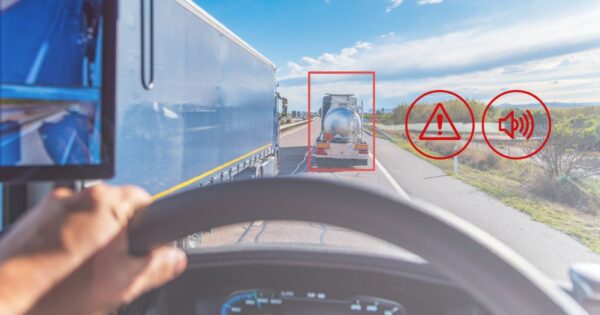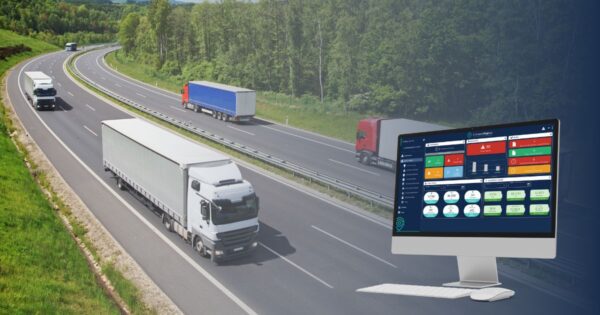Every reader of this blog is probably well aware that accidents cost money. Even minor tips or scrapes can mean costs in terms of repairs and vehicles off the road. Something serious can lead to truly significant costs from a legal, compensation and insurance perspective.
And something more serious again can be enough to put even sizable organizations out of business.
For better or worse, that’s the world we are living in. And the only rational response to that situation is pretty straightforward: invest in systems that prevent accidents happening.
Those systems take multiple forms, but they all share one thing in common, which is a refusal to accept that accidents ‘just happen’ and instead a commitment to creating the environment and safety culture that prevents as many accidents as possible.
A key example of such a system is active driver monitoring, and it is what we will talk about during the rest of this piece.
What is Driver Monitoring?
In the simplest possible terms, it is pointing a camera at the driver of a vehicle and constantly checking for behaviors or events that may lead to accidents.
Ideally, it also provides active warnings customized to each specific event that ensures that those behaviors are corrected in-the-moment before the worst occurs. To give an obvious example, think of a ‘pay attention’ audio warning that is triggered when the driver’s eyes are off the road for a specific length of time.
Lastly, driver monitoring records and highlights driver-related incidents that don’t lead to accidents, in order to support training and intervention that over time improves safety across the fleet.
The purpose of all of this, of course, is to prevent those accidents for which driver behaviour is a contributing factor. And reduce the cost incurred by any organization that operates a fleet of vehicles. But to do that job effectively is not quite as simple.
All Driver Monitoring is not the same
If you take one thing away from this article, let it be this:
Driver monitoring is not just about cameras
In fact, let’s go further. Cameras are the least important part of driver monitoring systems. Far, far more important is the quality of the artificial intelligence (AI) that is detecting dangerous behaviors and alerting the system accordingly. It is with the AI that the quality of a driver monitoring system resides.
Think about it. Any warning system needs to detect genuinely dangerous behavior. But it also needs to ensure that drivers are not bombarded with a large number of false alarms, each of which effectively teaches those drivers to ignore the system. So the ability to accurately detect driver events is vitally important.
These events include:
- Fatigue. It is difficult to be certain about the precise causes of road accidents, but fatigue has been estimated to contribute to 10-20% of them. “Tiredness kills”. On this basis, a good driver monitoring should be looking for the signs of fatigue: excessive yawning, the eyelids drooping, or even the eyes closing altogether.
- Distraction. “Keep your eyes on the road” is good advice: an extraordinary 80% of road accidents involve some from of driver distraction. A driver monitoring system needs to identify when drivers are not paying attention, but at the same time not be triggered by glances in wing and rear-view mirrors.
- Phone Usage. A leading cause of distraction, driver monitoring should be able to identfy phone use specifically, particularly as it may be against company policy.
- Smoking. Whether for safety purposes (as a leading cause of distraction) or simply in order to enforce a company no-smoking policy, most driver monitoring systems should be able to detect when a driver is smoking.
As above, detecting these events, and doing so accurately, is the core competence of a driver monitoring system. Bear that in mind when considering the market.
How Driver Monitoring drives safety
Detecting events is one thing. What you do with that information is another. Broadly speaking, driver monitoring improves safety in two distinct ways, each starting with the detection of an event. The aim here is to prevent accidents, not simply have some useful evidence after the fact. Let’s use a ‘fatigue’ event to show how this works.
The first and most obvious action is the immediate warning in the moment. The driver closes his or her eyes, and an audible warning sounds in the cab (and keeps sounding). This is how a driver monitoring system should work, and it is precisely how a CameraMatics system DOES work. We know, we’ve seen countless examples of these warnings helping avoid serious accidents.
The warning should be distinct for each event type, rather than a generic ‘beep’ (which could be almost anything, and may be ignored by a driver). When a system operates in this way, accidents caused by driver behaviors can be drastically reduced, with associated reducing in the cost of operating a fleet.
The second response to driving events operates over time.
When events are logged, they can then be viewed and assessed by a fleet manager or similar. It becomes straightforward to identify patterns, such as a particular driver who regularly shows signs of fatigue, or alternatively a particular shift or route where fatigue is often an issue.
This in turn informs two possible courses of action. Firstly, individual drivers can receive personalized training, including a review of real-world events, to help ensure that driving whilst fatigued does not happen again. This process can also help surface underlying issues that are causing driving whilst fatigued, and drivers can be supported in addressing those issues.
Secondly, the organization itself can look at these patterns and identity where work practices and policies are causing fatigue, and look to address them.
In both cases, safety levels are being improved over time as the root causes of fatigue are being addressed. That means drivers being alert, and less instances when those audible alerts will be required.
In short: a safer, smarter fleet, thanks to intelligent driver monitoring. If that sounds like something you are interested in, and you’d like to put the CameraMatics solution to the test, drop us a line.









